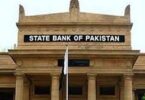F.P. Report
Washington, DC : The Executive Board of the International Monetary Fund (IMF) concluded the Article IV Consultation [1] with Zimbabwe on March 21, 2022.
Zimbabwe experienced severe exogenous shocks (cyclone Idai, protracted drought, and the COVID-19 pandemic) during 2019-20, which along with policy missteps in 2019, led to a deep recession and high inflation. Real GDP contracted cumulatively by 11.7 percent during 2019-20 and inflation reached 837 percent (y/y) by July 2020. The authorities’ swift response to the pandemic, including through containment measures and economic and social support, helped contain its adverse impact. Pandemic-related spending, equivalent to 2 percent of GDP, in 2020 was financed by reallocation within the budget. In 2021, such outlays represented about 1.6 percent of GDP, partially financed by the SDR allocation. In addition, expenditures were increased to bolster food security and farm inputs to vulnerable households. The Reserve Bank of Zimbabwe introduced a medium-term bank accommodation lending facility and private sector lending facility.
Real GDP rose by 6.3 percent in 2021 reflecting a bumper maize harvest, strong pickup in mining, and buoyant construction. A tighter policy stance since mid-2020 (relative to 2019) has contributed to lowering inflation to 60.7 percent (y/y) at end-2021. Fiscal policy was tightened in 2020‑21, reflecting increased revenues and lowered spending. The current account balance turned into a surplus during 2019-21, reflecting favorable metals’ prices, lower imports, and a surge in remittances. However, high double-digit inflation and wide parallel foreign exchange market premia have persisted. Poverty has risen and about a third of the population is at risk of food insecurity.
The output recovery that resumed in 2021 is expected to continue, albeit at a slower pace, with growth projected at about 3½ percent in 2022 and 3 percent over the medium term in line with Zimbabwe’s growth potential. The authorities aim to limit the 2022 budget deficit at 1½ percent of GDP, and below 2 percent of GDP over the medium-term. At the same time, the current account surplus is expected to decline over the medium term, reflecting a pickup in imports and slowdown in remittances. The effects from the COVID-19 pandemic and protracted drought have compounded existing structural constraints and would lead to scarring on the economic outlook.
International reengagement has lagged as stakeholders seek political and economic reforms. The 2019 Staff-Monitored Program experienced significant policy slippages and elapsed without a review. Since then, the authorities have made significant progress towards restoring macroeconomic stability, though the implementation of past IMF policy advice has been mixed. The authorities have developed a debt resolution strategy and started token payments to creditors in a bid to make progress on reengagement.
Executive Board Assessment [2]
Executive Directors welcomed the positive signs of economic recovery following two years of deep recession. Directors commended the authorities for their swift response to the COVID-19 pandemic and for stronger efforts to address macroeconomic imbalances while prioritizing social support. Noting that substantial challenges remain, including extreme poverty and longstanding structural constraints, they urged the authorities to implement the necessary reforms that would foster higher, more inclusive growth and pave the way for reengagement with the international community.
Directors agreed that fiscal policy should aim to restore macroeconomic stability and create fiscal space for priority spending. They emphasized the need to enhance revenue mobilization, including through broadening the tax base and improving tax administration and compliance. On the spending side, accelerating reforms of state-owned enterprises and enhancing fiscal controls will be critical to limit fiscal risks. Directors also encouraged the authorities to use the SDR allocation prudently and transparently.
Directors noted that Zimbabwe remains in debt distress, with large external arrears to official creditors. They welcomed the authorities’ commitment to re-engage with external creditors, including by resuming token payments and preparing a debt resolution strategy. Directors encouraged further efforts to enhance debt management and transparency.
Directors recommended further monetary tightening, given the persistently high inflation. In this context, they emphasized the need to increase the operational independence of the central bank, discontinue its quasi-fiscal operations, and improve its coordination with the fiscal authorities. Concerted efforts are needed toward greater exchange rate flexibility by allowing a more transparent and market-driven price process. Directors called on the authorities to phase out exchange restrictions and multiple currency practices as soon as conditions permit.
Directors emphasized the need for continued vigilance to ensure financial stability, including by addressing remaining banking sector weaknesses. They welcomed the removal of the country from the FATF grey list and progress on strengthening the AML/CFT framework, and encouraged further efforts to address the remaining deficiencies.
Directors noted that addressing institutional weaknesses is instrumental in supporting growth and social development. They looked forward to further progress on implementing the 2020 National Anti-Corruption Strategy. Directors underscored the importance of prioritizing structural reforms to improve the business climate and build resilience to climate change.
Directors encouraged the authorities to advance reforms, noting that a new Staff Monitored Program could help establish a track record of sound policies and provide further impetus to their re-engagement efforts.
| Table 1. Zimbabwe: Selected Economic Indicators, 2017–26 | ||||||||
| 2019 | 2020 | 2021 | 2022 | 2023 | ||||
| Est. | Proj. | |||||||
| (annual percentage change, unless otherwise indicated) | ||||||||
| Output and prices | ||||||||
| Real GDP growth1/ | -6.1 | -5.3 | 6.3 | 3.5 | 3.0 | |||
| Nominal GDP (US$ millions) | 22,600 | 21,670 | 24,124 | 26,425 | 27,963 | |||
| GDP deflator | 440.5 | 569.0 | 128.5 | 68.1 | 39.8 | |||
| CPI (annual average) | 255.3 | 557.2 | 98.5 | 56.4 | 46.3 | |||
| CPI (end-of-period) | 521.1 | 348.6 | 60.7 | 55.0 | 42.0 | |||
| Money and credit | ||||||||
| Money supply (M2) | 249.4 | 481.3 | 142.4 | 77.4 | 50.6 | |||
| Money Base | 217.0 | 81.7 | 38.4 | 35.0 | 30.0 | |||
| Credit to the private sector | 173.8 | 571.8 | 158.9 | 74.3 | 40.8 | |||
| Credit to the central government | 40.7 | 65.5 | 115.2 | 138.7 | 112.5 | |||
| Money supply (in percent of GDP) | 18.6 | 17.0 | 17.0 | 17.3 | 18.1 | |||
| Credit to the private sector (in percent of GDP) | 5.9 | 6.3 | 6.7 | 6.7 | 6.6 | |||
| (ZWL$ per US$) | ||||||||
| Official Exchange rate | ||||||||
| ZWL:USD exchange rate (annual average) | 8.2 | 51.3 | 88.6 | … | … | |||
| ZWL:USD exchange rate (end-of-period) | 16.8 | 81.8 | 107.0 | … | … | |||
| (percent of GDP) | ||||||||
| Central government 2/ | ||||||||
| Revenue and grants | 12.3 | 15.4 | 17.2 | 17.0 | 17.0 | |||
| Expenditure and net lending | 13.5 | 14.9 | 18.7 | 18.9 | 18.8 | |||
| Overall balance | -1.3 | 0.5 | -1.5 | -1.9 | -1.9 | |||
| Primary balance | -0.9 | 0.8 | -1.1 | -1.2 | -1.2 | |||
| (US$ millions, unless otherwise indicated) | ||||||||
| Balance of payments | ||||||||
| Exports of goods and services | 5,267 | 5,263 | 6,448 | 6,607 | 6,818 | |||
| (annual percentage change) | 1.7 | -0.1 | 22.5 | 2.5 | 3.2 | |||
| Imports of goods and services | 5,398 | 5,489 | 6,771 | 7,127 | 7,588 | |||
| (annual percentage change) | -29.4 | 1.7 | 23.3 | 5.3 | 6.5 | |||
| Current account balance (excluding official transfers) | 920 | 1,096 | 1,170 | 866 | 413 | |||
| (percent of GDP) | 4.1 | 5.1 | 4.8 | 3.3 | 1.5 | |||
| Gross international reserves | 151 | 34 | 716 | 540 | 540 | |||
| (months of imports of goods and services) | 0.3 | 0.1 | 1.3 | 0.9 | 0.9 | |||
| Public debt 3/ | ||||||||
| Consolidated public sector debt | 10,415 | 14,915 | 17,855 | 18,373 | 19,031 | |||
| (percent of GDP) | 93.2 | 102.7 | 66.3 | 69.5 | 68.1 | |||
| Public and publicly guaranteed external debt | 9,609 | 14,485 | 17,290 | 17,468 | 17,594 | |||
| (percent of GDP) | 86.0 | 99.8 | 64.2 | 66.1 | 62.9 | |||
| Of which: Arrears | 6,406 | 10,022 | 12,722 | 12,912 | 13,102 | |||
| (percent of GDP) | 57.3 | 69.0 | 47.2 | 48.9 | 46.9 | |||
| PPG external debt (percent of GDP) from DSA 4/ | 87.5 | 106.6 | 86.6 | 73.8 | 70.6 | |||
| Sources: Zimbabwean authorities; IMF staff estimates and projections. | ||||||||
| 1/ At constant 2009 prices. | ||||||||
| 2/ Includes SDR spending and financing of 1.0 percent of GDP and 0.5 percent of GDP in 2021 and 2022, respectively. | ||||||||
| 3/ Debt ratios in the macroframework are based on the official exchange rate up to 2021 and on the implied exchange rate over 2022-2026. The latter takes into account the conversion factor used in national account statistics. | ||||||||
| 4/ DSA debt ratios differ from the ones in the macroframework due to the fact that GDP in the DSA does not take into account the conversion factor used in national account statistics (for the historical figures) and differences between avg. and e.o.p. exchange rates (for the projections). |






